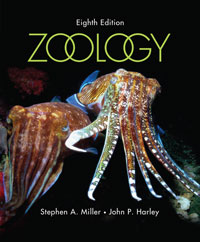1.
A) mitotic phase. B) cell cycle. C) cytokinesis phase. D) G1 phase. 2.
A) G1 phase. B) G2 phase. C) S phase. D) interphase. 3.
A) G1 phase B) G2 phase C) S phase D) interphase 4.
A) chromatid. B) daughter chromosome. C) sister chromosome. D) both b and c. 5.
A) kinetochore. B) centromere. C) centrosome. D) all of the above (a-c). 6.
A) prophase B) metaphase C) anaphase D) telophase 7.
A) prophase B) metaphase C) anaphase D) telophase 8.
A) genetic recombination. B) meiosis II. C) synapsis. D) crossing over. 9.
A) phenotypic expression. B) codominance. C) independent assortment. D) transcription. 10.
A) synapsis. B) syngamy. C) genetic recombination. D) dyad formation. 11.
A) independent assortment B) cytokinesis C) crossing-over D) point mutations 12.
A) 0. B) 25. C) 50. D) 100. 13.
A) 1 B) 2 C) 3 D) 4 14.
A) guanine. B) cytosine. C) thymine. D) uracil. 15.
A) a base. B) ribose. C) deoxyribose. D) phosphate. 16.
A) transfer RNA B) messenger RNA C) ribosomal RNA D) deoxynucleotide 17.
A) Transcription/nucleus B) Transcription/ribosome C) Translation/nucleolus D) Translation/ribosome 18.
A) nucleotide. B) nucleoside. C) codon. D) anticodon. 19.
A) transfer RNA B) messenger RNA C) ribosomal RNA D) deoxynucleotide 20.
A) nucleotide/nucleoside B) codon/anticodon C) codon/amino acid D) mRNA/DNA 21.
A) RNA is single stranded, and DNA is double stranded. B) RNA contains the base thymine, and DNA contains the base uracil. C) RNA is found in the nucleus and cytoplasm, and DNA is mainly in the nucleus. D) RNA contains the sugar ribose, and DNA contains the sugar deoxyribose. 22.
A) adenine and guanine B) cytosine and thymine C) adenine and uracil D) cytosine and uracil 23.
A) it is remarkably error free. B) it results in one new DNA molecule and one parental molecule. C) it results in two DNA molecules, each consisting of one new and one parental strand. D) it results in two completely new parental molecules. 24.
A) degeneracy. B) homology. C) wobble. D) antiparallel. 25.
A) Messenger RNA is produced. B) Transfer RNA delivers amino acids to a ribosome. C) Codons pair with anticodons. D) A new strand of DNA is synthesized. 26.
A) A UGA codon is aligned with the P site of the ribosome. B) An AUG codon is aligned with the P site of the ribosome. C) RNA polymerase recognizes a promotor. D) Two strands of DNA are separated. 27.
A) True B) False 28.
A) True B) False 29.
A) True B) False 30.
A) True B) False 31.
A) True B) False 32.
A) True B) False 33.
A) True B) False 34.
A) True B) False 35.
A) True B) False 36.
A) True B) False 37.
A) True B) False 38.
A) True B) False





